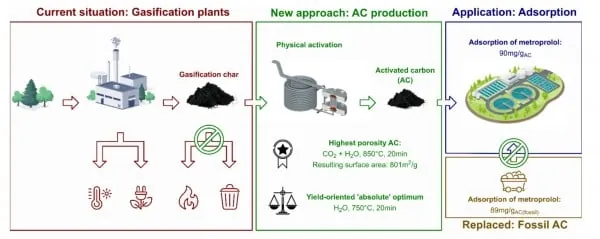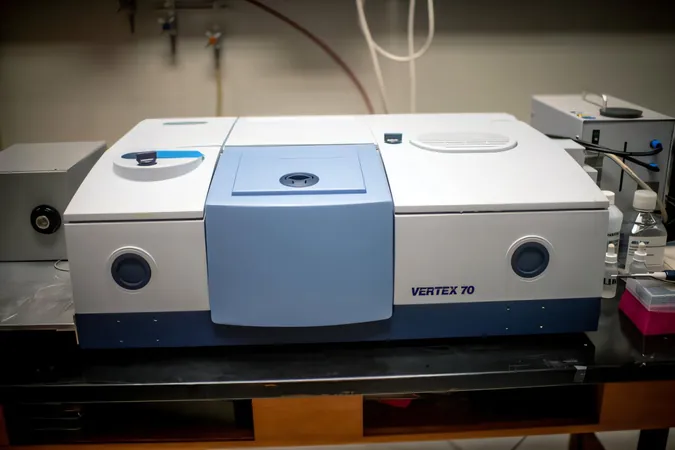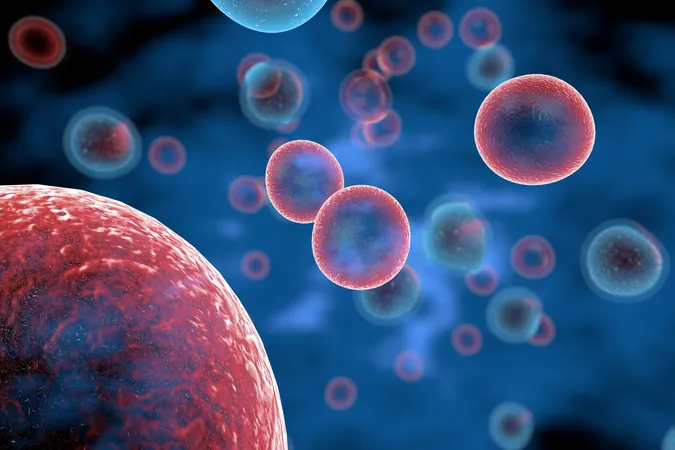
Transforming Gasification Residue into Green Gold: The Future of Activated Carbon
2025-03-26
Author: Li
Introduction
In a groundbreaking study, Austrian researchers have discovered a new method to produce high-quality activated carbon from gasification char—a by-product of wood gasification used for green energy production. This advancement could significantly impact our battle against climate change and pollution by providing a sustainable alternative to traditional fossil-derived activated carbon.
Gasification Process
Gasification transforms wood into a combustible gas under high temperatures, allowing it to be utilized as a fuel source or for electricity generation. However, the process leaves behind about 10% of solid waste known as gasification char. Despite the challenges associated with its lower quality compared to conventional sources, the researchers led by PhD student David Gurtner from BOKU University, see potential in this overlooked residue.
Research Insights
Gurtner notes, "Gasification char is derived from softer materials like wood, which makes achieving high porosity a challenge. However, with the right techniques, I believe it can be upgraded into a valuable resource." His optimism is reinforced by the absence of comprehensive studies in this domain, as previous research often lacked economic evaluations and innovative approaches.
Optimization of Gasification Char
The team employed a method called Design of Experiments to optimize the gasification char, successfully enhancing its porosity and the ability to adsorb micropollutants. Remarkably, they developed an activated carbon with a surface area of 800 m²/g—equivalent to the size of an ice hockey field for just a teaspoon of the material! Their findings indicate that using mild H2O activation can boost adsorption capacities significantly, achieving an impressive eleven-fold increase.
Commercial Application and Future Prospects
What’s more, the researchers have already begun scaling this method at a commercial gasification facility, yielding promising outcomes. Expert Jan Back, a co-author of the study, emphasized, "With new EU regulations mandating the removal of micropollutants by 2045, the demand for renewable activated carbon is projected to soar." Switzerland has already led the way since 2016 by successfully incorporating activated carbon in large-scale wastewater treatment.
Conclusion
This innovation presents a compelling vision for the future of wastewater management and environmental sustainability. By encouraging the gasification industry to adopt this pathway, we can significantly reduce reliance on fossil-based activated carbon, paving the way for a greener, more sustainable future. As regulatory pressures mount and eco-consciousness rises, this breakthrough could hold the key to tackling some of our most pressing environmental challenges.
Stay Tuned
Stay tuned as this exciting development unfolds, which could very well redefine how we approach renewable materials in an era focused on sustainability!



 Brasil (PT)
Brasil (PT)
 Canada (EN)
Canada (EN)
 Chile (ES)
Chile (ES)
 Česko (CS)
Česko (CS)
 대한민국 (KO)
대한민국 (KO)
 España (ES)
España (ES)
 France (FR)
France (FR)
 Hong Kong (EN)
Hong Kong (EN)
 Italia (IT)
Italia (IT)
 日本 (JA)
日本 (JA)
 Magyarország (HU)
Magyarország (HU)
 Norge (NO)
Norge (NO)
 Polska (PL)
Polska (PL)
 Schweiz (DE)
Schweiz (DE)
 Singapore (EN)
Singapore (EN)
 Sverige (SV)
Sverige (SV)
 Suomi (FI)
Suomi (FI)
 Türkiye (TR)
Türkiye (TR)
 الإمارات العربية المتحدة (AR)
الإمارات العربية المتحدة (AR)